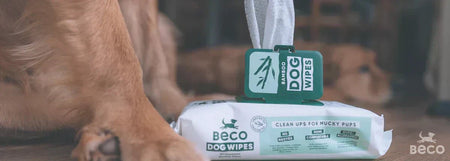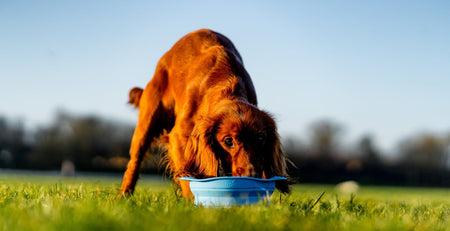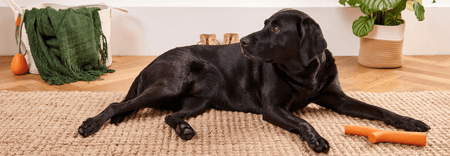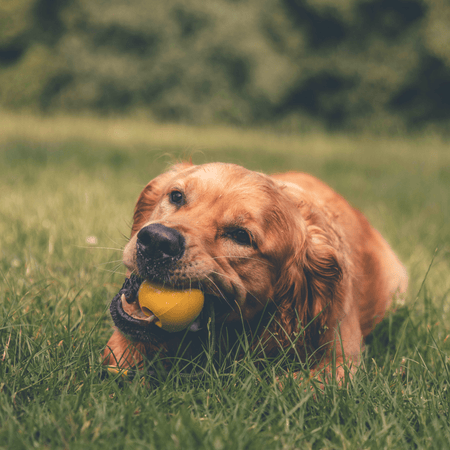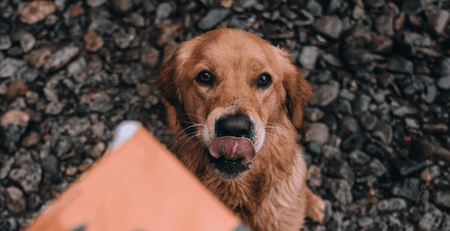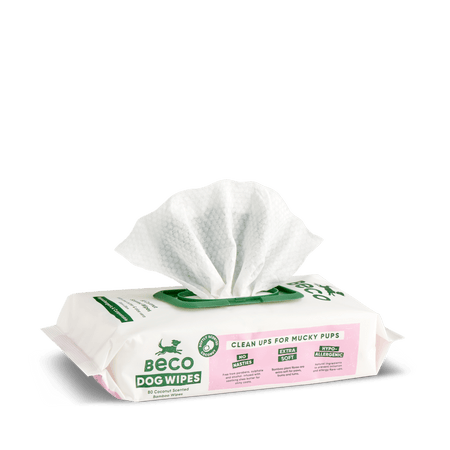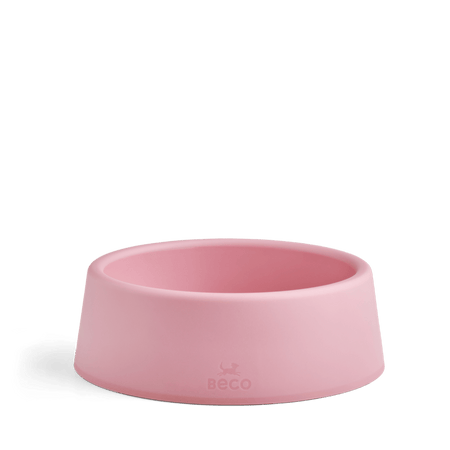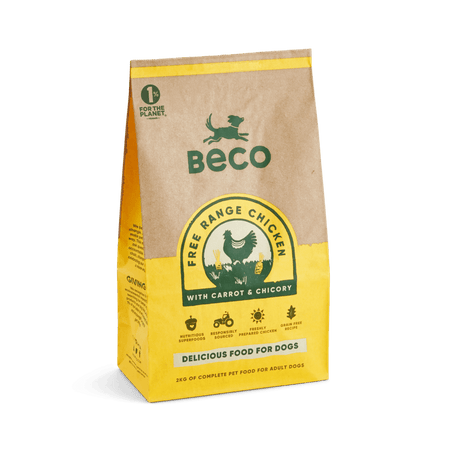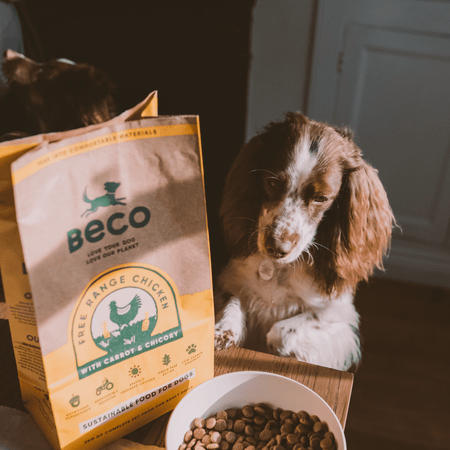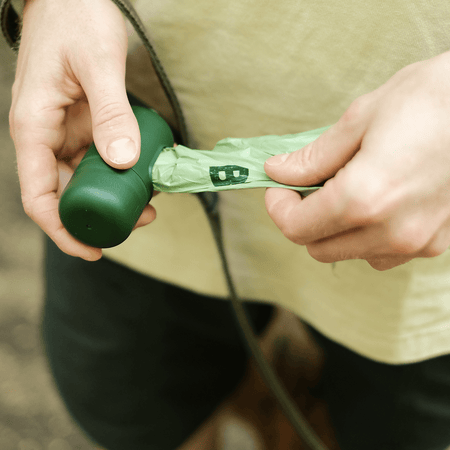Stumped at how to get rid of tear stains on dogs? You’re not fighting the battle alone, as many pups suffer from tear-stained eyes.
They make your best friend look down in the dumps and you get worried looks from other pet parents.
The good news is we've tested 8 proven methods to eliminate those stubborn marks - from quick daily fixes to long-term solutions.
No more brown streaks. Just easy, effective ways to keep your dog's face clean and bright.
- Those reddish-brown stains are caused by porphyrin deposits and excess tear production.
- Simple switches like replacing plastic bowls and filtering water dramatically reduce staining.
- Medical issues, from ingrown eyelashes to blocked tear ducts, might be the hidden culprit.
- Daily face cleaning with the right products prevents stains before they set in.
Why Does My Dog Have Tear Stains?
Tear stains can make even the happiest pup look sad.
These reddish-brown marks are quite common around the eyes of dogs and are the result of excessive tear production and porphyrin deposits.
If you want to know how to get rid of tear stains on dogs fast, there’s no miracle fix. But the good news is you can get rid of them with a combination of regular cleaning, dietary improvements, and safe supplements.
Here are some effective and easy ways to keep your furry friend’s face clean and bright:
1. Start With a Clean Face
The best way to stop dog tear stains is by staying ahead of the problem. Wiping your dog’s face twice a day with a damp cloth removes tears before they cause stains.
Regular cleaning with gentle wipes also helps to keep bacteria and porphyrins at bay.
If your pup already has stains, use a contact lens solution containing boric acid or a cotton ball soaked in liquid vitamin C to lighten them.
These gentle acids oxidise the iron deposits, reducing the stain's appearance.
2. Use Filtered Water
Tap water that is rich in minerals can contribute to tear staining. So, if your water is high in iron or unfiltered, think about using filtered or bottled water instead.
This helps to reduce the risk of bacteria and facial irritation. It’s also a good idea to clean your pup’s water bowl regularly to keep it hygienic.
3. Feed a Balanced Diet
Poor nutrition leads to a host of problems, and it’s possible that a bad diet can exacerbate your pup’s tearing.
Avoid low-grade, filler-heavy kibble. Instead, opt for well-studied commercial diets from reputable brands or consult your vet about fresh or raw feeding options.
4. Regular Grooming for Hygiene
Trimming the hair around your pet’s eyes prevents moisture build-up, reducing the risk of staining.
Pair this with twice-daily wiping, and you’re on the path to a cleaner, happier pup.
5. Consider Safe Supplements and Medications
If thorough grooming doesn’t solve the issue, ask your vet about supplements or medications.
Non-tylosin products are available, but don’t jump into antibiotics without professional guidance. Improper use can lead to bacterial resistance.
6. Rule Out Underlying Medical Issues
If your pup has tear stains all of a sudden it might be because of a health issue.
Blocked tear ducts, eye infections, ingrown eyelashes, or even teething in puppies can cause excess tearing. A vet visit should always be your first step before tackling tear stains at home.
Medical issues that can cause excessive tearing include:
-
Ingrown eyelashes
-
Abnormally large tear-producing glands
-
Abnormally small tear duct openings
-
Stress
-
Certain medications
-
Poor-quality diet
-
Ear infection
-
Bacteria from plastic food bowls
-
Foreign object in the eye
-
Eye infection
-
Teething (in young puppies)
7. Understand the Role of Porphyrins
Porphyrins are iron-containing molecules found in tears. When exposed to air and sunlight, they cause those brownish stains.
All dogs produce porphyrins, but they’re more noticeable on light-coloured fur. Regular cleaning and using mildly acidic solutions help manage porphyrin-related staining.
8. Yeast and Bacterial Imbalances
Contrary to popular belief, yeast isn’t always the cause of tear stains.
Bacteria play a significant role. In some cases, antibiotics help reduce staining, but they’re a last resort due to potential risks.
Quick Tips for Tear Stain Management
| Treatment | Benefit |
|---|---|
| Wipe face twice daily | Removes tears before stains form |
| Switch to stainless steel or glass bowls | Reduces bacteria that worsen staining |
| Filter or use bottled water | Lowers mineral content that contributes |
| Trim hair around the eyes | Prevents tear accumulation |
| Use mild boric acid or vitamin C solution | Lightens existing stains |
| Consult vet for supplements or meds | Target underlying causes effectively |
| Avoid low-quality food | Prevents excess tearing and staining |
What To Stay Away From
Let’s face it, online advice abounds, but not all remedies are safe or practical. Here is what vets generally recommend you avoid when getting rid of tear stains:
-
Terramycin: Primarily intended for specific eye infections, not for cosmetic issues like tear stains.
-
Over-the-Counter Tylosin: This antibiotic, when used long-term, can lead to bacterial resistance. It's best reserved for actual infections.
-
Hydrogen Peroxide: A strong chemical that can damage your dog's fur and skin, and cause irritation or burns if it gets into their eyes.
-
Makeup Remover: Designed for human skin, these products can irritate your dog's eyes and skin.
-
Corn Starch: While it might seem harmless, it doesn't address the root cause of tear stains and can cake up, leading to further issues.
-
Milk of Magnesia, Yogurt, or Honey: While natural, these substances aren't effective for tear stains and can be messy or attract unwanted pests.
Frequently Asked Questions
How can I remove dog tear stains naturally?
The best natural remedy is regular grooming. Wipe your dog’s face daily with a damp cloth or wipe, trim the fur around the eyes, and switch to filtered water and non-plastic bowls.
How do you remove tear stains from a white dog?
It’s the same process. Regular cleaning and using a mild, safe solution under the eyes. Consistency is key to keeping your dog’s face bright.
Do tear stains on dogs go away?
Yes, with consistent grooming, diet improvements, and a clean water supply, tear stains often fade. Severe cases might need supplements or vet-prescribed treatments.
Conclusion
Keeping your dog's face free from tear stains requires a mix of daily care and smart choices.
From switching to stainless steel bowls and filtered water to maintaining proper grooming habits, these simple changes make a noticeable difference.
Remember that tear stains might signal underlying health issues, so it's worth consulting your vet if they appear suddenly or worsen.
While regular cleaning with gentle solutions helps fade existing stains, prevention through proper diet and hygiene remains key. By following these eight proven methods and avoiding harmful remedies like hydrogen peroxide or terramycin, you'll help your furry friend maintain a clean, bright face.
Ready to start tackling those tear stains? Try our grain-free dog food to support overall health or pick up our gentle cleansing wipes for daily care.

